 Open Access
Open Access
ARTICLE
Industrial Untapped Rotational Kinetic Energy Assessment for Sustainable Energy Recycling
Centre for Electric Energy and Automation, Faculty of Engineering, Multimedia University, Cyberjaya, 63100, Malaysia
* Corresponding Authors: Md Tanjil Sarker. Email: ; Gobbi Ramasamy. Email:
Energy Engineering 2025, 122(3), 905-927. https://doi.org/10.32604/ee.2025.058916
Received 24 September 2024; Accepted 15 November 2024; Issue published 07 March 2025
Abstract
Electrical energy can be harvested from the rotational kinetic energy of moving bodies, consisting of both mechanical and kinetic energy as a potential power source through electromagnetic induction, similar to wind energy applications. In industries, rotational bodies are commonly present in operations, yet this kinetic energy remains untapped. This research explores the energy generation characteristics of two rotational body types, disk-shaped and cylinder-shaped under specific experimental setups. The hardware setup included a direct current (DC) motor driver, power supply, DC generator, mechanical support, and load resistance, while the software setup involved automation testing tools and data logging. Electromagnetic induction was used to harvest energy, and experiments were conducted at room temperature (25°C) with controlled variables like speed and friction. Results showed the disk-shaped body exhibited higher energy efficiency than the cylinder-shaped body, largely due to lower mechanical losses. The disk required only two bearings, while the cylinder required four, resulting in lower bearing losses for the disk. Additionally, the disk experienced only air friction, whereas the cylinder encountered friction from a soft, uneven rubber material, increasing surface contact losses. Under a 40 W resistive load, the disk demonstrated a 17.1% energy loss due to mechanical friction, achieving up to 15.55 J of recycled energy. Conversely, the cylinder body experienced a 48.05% energy loss, delivering only 51.95% of energy to the load. These insights suggest significant potential for designing efficient energy recycling systems in industrial settings, particularly in manufacturing and processing industries where rotational machinery is prevalent. Despite its lower energy density, this system could be beneficially integrated with energy storage solutions, enhancing sustainability in industrial practices.Keywords
Electric motors play an essential role in various industries and applications, contributing significantly to global energy consumption. Enhancing energy efficiency in electric motors is crucial to reducing environmental impact and operational costs. This research overview explores the integration of energy storage systems and recycling methodologies to optimize energy efficiency in electric motors. Key concepts, such as the free-running load containing rotational kinetic energy, are examined to provide insights into innovative strategies for improving energy efficiency.
The industrial sector is the largest consumer of energy in Malaysia [1]. Industrial motors account for a major segment of total industrial energy use, and various energy-saving strategies have been developed to reduce energy consumption. These strategies include high-efficiency motors and variable speed drives (VSDs) to improve the load factor of the entire system [2]. However, none of these strategies utilize the existing kinetic energy from the machines to perform regenerative braking, leading to unutilized energy dissipation through friction and heat. Devices that have been applied regenerative concept would be flywheel energy storage and electric vehicles. Regenerative braking systems, developed for electric vehicles, harvest electrical energy during braking by converting vehicle motion energy into electrical energy. Flywheel energy storage requires higher conditions such as high speed, huge installation space, dust control, and safety clearance. Whereas, in electric vehicles, the braking effect is the main concern. Thus, none of the efficient ways is developed for industrial application purposes. According to [3], energy can be saved by using recovery technology in industrial processes. Given the ongoing trend toward increased reliance on electrical energy, this proposal explores the feasibility of recycling rotational kinetic energy into usable electrical energy for diverse applications.
The environment, economy, and energy supplies are all severely strained in Malaysia, where 95% of energy is generated from non-renewable sources. Coal, which needs to be imported from other nations, accounts for around 53% of the energy produced [1]. This heavy reliance on fossil fuels not only increases carbon emissions but also exposes the country to fluctuations in global energy markets. To address these issues, the Malaysian government made a commitment to cut emissions in the Paris Agreement of 2016 that would amount to 13.113 million tonnes of CO2 by the year 2030 [1]. To further support the aforementioned objectives, the government has also committed to creating green technologies. Establishing a feed-in-tariff system is one of these steps to draw funding to green energy, renewable energy, and carbon credit-eligible projects.
Given these objectives, this research on kinetic energy recycling is particularly timely and crucial for Malaysia. By focusing on industrial energy recycling, it aligns with the government’s commitment to reducing reliance on imported fossil fuels, lowering emissions, and promoting cleaner energy practices. Furthermore, as Malaysia transitions towards renewable energy, such innovations in energy efficiency also support global efforts to create a sustainable, low-carbon economy.
This research paper will investigate the available energy in rotational objects using physics-based analysis. Analytical models, including mathematical, physical, and simulation-based approaches, are employed as needed. The research focuses on the general kinetic energy calculations for rotational machines. The rest of the paper is organized as follows: Section 2 provides a critical review of the literature related to kinetic energy harvesting from rotational objects. Section 3 describes the investigation of two physics models, highlighting their differences in potential energy losses in machines and the amount of available kinetic energy from rotating loads. The results and discussion are presented in Section 4. Finally, Section 5 provides conclusions and recommendations for future work.
The advancement of technology in the 21st century has led to the development of high-efficiency devices for harvesting energy. Renewable energy sources generate power from natural resources, which do not contribute to pollution and are replenished within a human lifetime. The primary objective of this research is to utilize only the necessary amount of energy while recycling the surplus for future use, storing it in an energy storage system. In a study by [4], utility-scale energy storage systems were analysed, with a focus on flywheel energy storage systems, which emerged as efficient and durable options for power generation. Research [5–7] highlighted the value of second-life electric energy storage due to its longevity. The study discussed in [8] emphasized the importance of recycling leftover energy to reduce waste and enhance energy accessibility, with a particular focus on electric vehicle (EV) batteries and flywheel systems. Moreover, references [9] and [10] explored energy generation, utilization, and storage methodologies, highlighting the need for further research into recycling energy from various natural resources. The review in [10] underscored the necessity of distinguishing between energy suitable for recycling and that which only requires storage. As global interest in renewable energy grows, reference [11] examined the environmental impact of recycling systems, including those involving wind turbines, batteries, solar panels, and fuel cells. Wind turbines, as highlighted in [12] and [13], demonstrate a high recyclability rate, making them a leading green energy option. Strategies to improve efficiency and reliability, alongside energy recycling, are crucial for long-term sustainability [14]. A review paper stated that advancements in battery technologies contribute to the overall improvement of energy storage systems, marking a revolution in renewable energy storage, leading to increased energy efficiency, lower overall costs, and greater energy availability [15].
Electricity is a crucial resource in modern society, making the exploration of alternative methods for generating renewable electrical power imperative. One innovative approach is the development of a power-generating revolving door, similar to a turbine but harnessing the energy exerted by individuals. A small-scale prototype was constructed and tested, providing insights into factors influencing its performance and efficiency. The study suggests that utilizing the revolving door for energy storage, rather than directly powering loads, may be more practical based on the collected data [16]. In remote areas where electricity is scarce, supplying power to facilities like weather stations poses significant challenges. To address this issue, a rotational Halbach array-based wind energy harvester is proposed. This harvester generates substantial output power to drive individual functional units and IoT sensors, enabling self-powered weather stations. By employing a Halbach array magnet to guide magnetic flux, the harvester achieves enhanced performance, with a significant increase in magnetic flux density compared to conventional magnets. Additionally, the use of MXene/PVDF-TrFE as a triboelectric material enhances wind speed determination. This research paves the way for high-performance energy harvesters and self-powered IoT systems [17].
A novel Kinetic Energy Harvester (KEH) has been developed specifically to power oceanic and rogue drifters. This system utilizes a double pendulum mechanism to convert wave oscillations into rotational energy on a flywheel, which is then converted into DC power by an electrical generator. A power management unit (PMU) with maximum power point tracking optimizes energy production. Real sea tests demonstrated the drifter’s performance, with the KEH generating a mean output power of 0.18 mW, reaching peaks of 2.5 mW. This research presents a promising solution for harnessing oceanic kinetic energy for practical applications [18].
The study also focuses on extracting kinetic energy from moving vehicles over speed breakers. The proposed system utilizes a rack-and-pinion mechanism to convert this kinetic energy into mechanical energy, subsequently driving a shaft that acts as the prime mover for a DC generator. While a prototype model demonstrates proof of concept, further modifications are necessary for large-scale electricity generation. This approach shows promise for reducing dependence on conventional energy sources and utilizing waste energy for sustainable electricity generation [19]. The study highlights the development of micro-hydro plants in rural areas, specifically focusing on the village of Sambangan in the District of Buleleng, Bali. With the potential to generate electricity from nearby streams or rivers and form irrigation systems, micro-hydro plants offer clean and sustainable energy solutions for remote communities [20,21]. The report outlines plans to enhance existing micro-hydro plants to provide more reliable electricity for villagers without access to the utility grid [22,23]. Technical specifications of the proposed 82 kW micro-hydro plant are detailed, along with estimated development costs. Additionally, an organization is identified to empower local manpower for effective and sustainable operation and maintenance of the power plant [24]. Table 1 is summarizing the research findings for energy harvesting system.
In this research, two different heavy mass bodies, a disk and a cylinder, were selected. The disk was defined as a simple model, while the cylinder was defined as a complex model. This distinction allows for a quantitative evaluation of the differences in their mechanical characteristics. Table 2 summarizes the advantages, limitations, and potential solutions for harnessing rotational kinetic energy from disc and cylinder bodies.
3.1 Physics-Based Rotating Kinetic Energy Calculations for Disc and Cylinder Bodies
In this section, two physics analyses will be discussed to identify the differences between the disk and cylinder bodies during rotational motion. These differences, including potential mechanical losses, will be evaluated to determine their impact on the recycling energy system. Additionally, the conversion of kinetic energy to electrical energy, as well as the relationship between the permanent magnet synchronous generator and the capacitor, will be explored.
3.1.1 Analysis of Force Gravity Acting on a Disk
As shown in Fig. 1, the disk is hanging on a shaft vertically, and the force of gravity acts uniformly across the entire disk body. The gravitational force affects the entire weight of the disk, pulling it downward either left or right side, which can be defined as:
where m is the mass of the object in [kg], g is the free fall velocity at [9.81].

Figure 1: Disk body setup
The total net force in equilibrium is zero.
As the force is zero, the net torque is defined as the product of the force and radius of the circle, which is also zero:
where R is the radius of the object [m].
In order to make the disk rotate in a circular motion, The net force must be greater than one of the sides, which is greater than mg. Let us assume rotate in a clockwise direction; the force on the right side must be greater than on the right. The difference between the force on the left and right cause the force on the disk to no longer be uniform.
where k is defined as the difference in torque [Nm].
The k value is a constant value to overcome the force of gravity acting on the left side to keep the disk rotating in a clockwise direction.
Mechanical power is defined as:
where mechanical torque,
Eq. (7) shows the required mechanical power is needed when due to the force of gravity.
If now losses consider, by modifying (3)
where
Eq. (9) represents the total mechanical power required when the force of gravity and friction loss are considered.
In this setup shown in Fig. 1, the motor drives the rotation of the disk, while the gravitational force consistently acts downward, influencing the disk’s dynamics. The motor must produce the mechanical power defined as:
Maintaining equilibrium in practical systems is challenging due to external disturbances like vibrations, which can be mitigated using damping mechanisms, adaptive control, and feedback loops. Real-world complexities such as imperfect disks and non-vertical shafts introduce unbalanced forces, requiring tolerance limits, real-time monitoring, and compensatory components. Computational simulations and adaptive control systems further enhance robustness, aligning the idealized model with industrial applications.
3.1.2 Analysis of Force Gravity on a Cylinder Body
In the analysis of the cylinder body setup, depicted in Fig. 2, the cylinder is mounted on wheels, with a motor providing the necessary rotational force. The force of gravity (FG) acts uniformly on the entire cylinder body, affecting its weight. The various forces acting on the cylinder include the gravitational force (FG) acting downward, the normal contact force (FN) exerted by the wheels upward, and the frictional force (F) opposing the motion. Force equilibrium (FE) is maintained by balancing these forces. Fig. 2 does not currently account for the impact of wear and tear on the wheels, which can significantly alter the frictional force over time. This change in friction could lead to increased energy consumption, negatively affecting the system’s long-term energy efficiency.

Figure 2: Cylinder body setup
In this setup, the motor drives the cylinder’s rotation while the gravitational force consistently acts downward. The normal contact force (FN) provided by the wheels counteracts this gravitational force, ensuring that the cylinder remains in equilibrium. The frictional force (F) plays a crucial role in enabling the rolling motion of the cylinder by opposing the direction of movement and providing the necessary traction. The total force acting on the wheel is defined as:
The force acting on four wheels is defined as:
where FE is a force acting on each wheel, and n is the number of wheels.
The normal contact force is defined as:
The frictional force is defined as:
Recall (3), the torque exerts on both sides as:
So, for equilibrium,
As in the previous case, the equation of motor power is the same as (10). which is:
The main difference between the two cases lies in the method of torque transfer to the body. The disk uses a direct-drive method, whereas the cylinder employs an indirect-drive method. In the indirect-drive method, torque is transferred through the contact between the surface of the wheel and the cylinder body. Therefore, the surface condition of both the wheel and cylinder is a crucial factor affecting the system’s overall efficiency. This phenomenon, known as rolling friction, can cause the rolling objects to eventually come to a stop. There are typically two types of rolling friction: deformation and adhesion between the contact surfaces, as illustrated in Fig. 3. Therefore, modifying Eq. (10),
where j is the loss due to the deformation and adhesion between the contact surface. The Eq. (16) indicates that the mechanical power

Figure 3: Rolling friction, Reprinted from reference [41]
Assuming resistive load connected to the generator shown in Fig. 4, then the electrical power, Pg becomes:
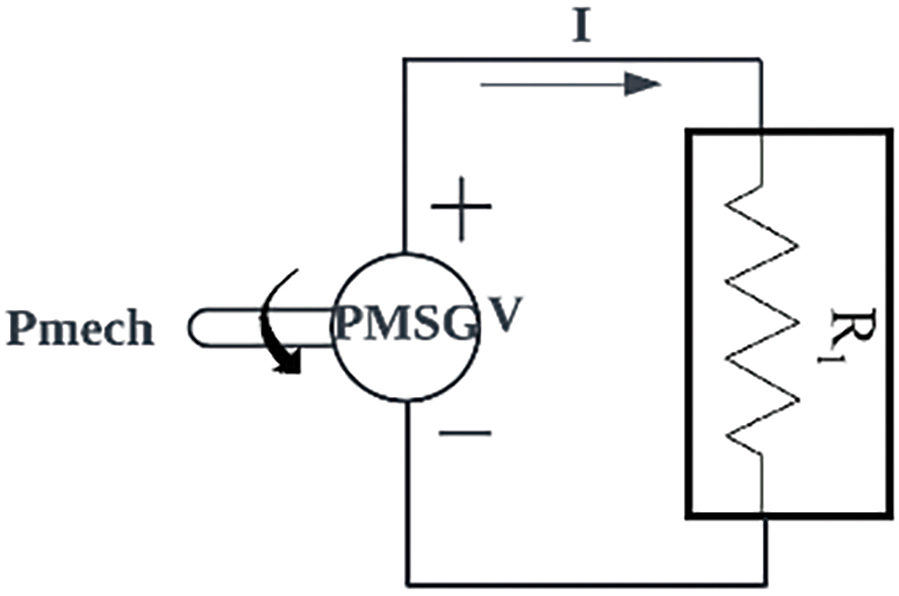
Figure 4: Generator and resistive load circuit diagram
Supposing the electrical motor is switched off, but the rotational body keeps rotating due to the inertia effect of body mass, The mechanical power is defined as:
The mechanical time constant,
where J is the moment of inertia [
Eq. (19) shows the relationship between harvested electrical power and mechanical time constant. This equation is based on upon the assumption that the braking effect is caused by generator and extra braking torque due to windage and friction. In general, the actual mechanical time constant will be less than the calculated mechanical time constant.
3.1.4 Power Curve Characteristics of a Permanent Magnet Synchronous Generator (PMSG)
Fig. 5 illustrates a typical power curve, depicting the relationship between the turbine’s mechanical power and wind speed. This curve identifies three critical wind speeds: cut-in wind speed, rated wind speed, and cut-out wind speed. In Fig. 3, mechanical power generated by the turbine is represented alongside wind speed. The cut-in wind speed denotes the minimum speed required for turbine operation and the initiation of power generation. The rated wind speed signifies the velocity at which the system reaches its nominal power output, equivalent to the generator’s rated output power. Finally, the cut-out wind speed represents the maximum wind speed at which the turbine can safely operate before shutdown.
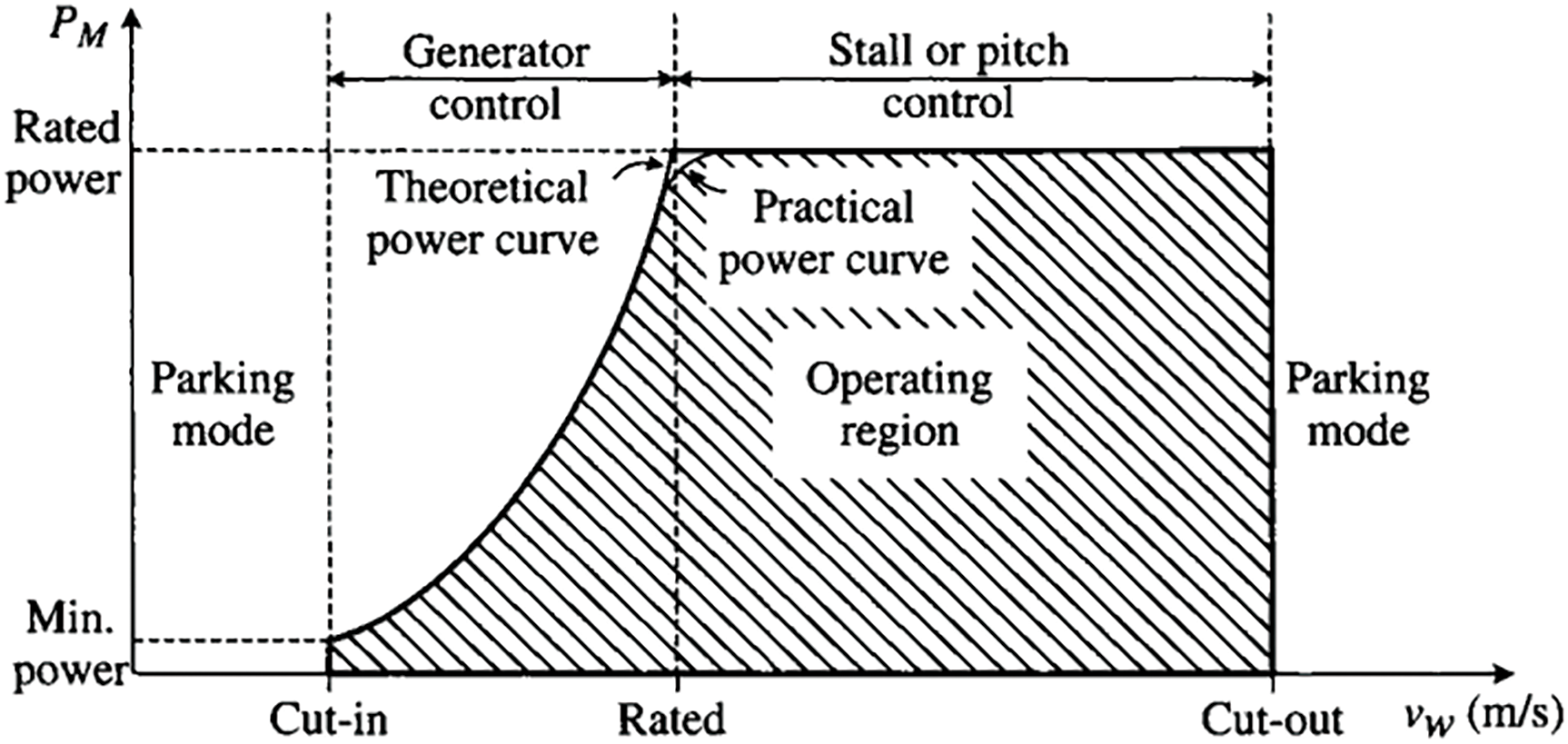
Figure 5: Typical power curve characteristics of wind turbine using PMSG [42]
In this research, the rotational body acts like a wind turbine, driving the generator shaft to produce electrical power. The angular velocity of the rotational body can be compared to wind speed. The power curve is characterized by two key angular velocities: cut-in and rated speeds.
The theoretical power curve equation for the generator control region is defined as follows:
where
Since the mechanical power captured by the turbine is related to the turbine torque,
Substitute (20) into (21), the turbine mechanical torque becomes:
From (20) to (22), it is observed that the output power is strongly increasing exponentially with the input speed.
3.1.5 Analogy between Rotational Kinetic Energy and Electrical Potential Energy
The analogy between a capacitor storing electric charge and an object storing rotational kinetic energy offers a way to elucidate the fundamental principles underlying both phenomena within the frameworks of classical mechanics and electromagnetism.
Fig. 6 shows a flywheel linked to a Permanent Magnet Synchronous Generator (PMSG), representing the capacitor, which is mechanically connected to a motor, symbolizing the power source that charges the capacitor. Initially, when at rest, the flywheel mirrors the uncharged state of a capacitor. Upon activation of the motor, energy is imparted to the flywheel, inducing rotational motion, akin to the accumulation of charge in a capacitor when a voltage is applied across its terminals. The energy stored within the rotating flywheel parallels the electric charge held within the capacitor. Just as the energy storage in the flywheel depends on its angular velocity and moment of inertia, the energy stored in the capacitor depends on the magnitude of the charge it holds and the voltage difference across it.
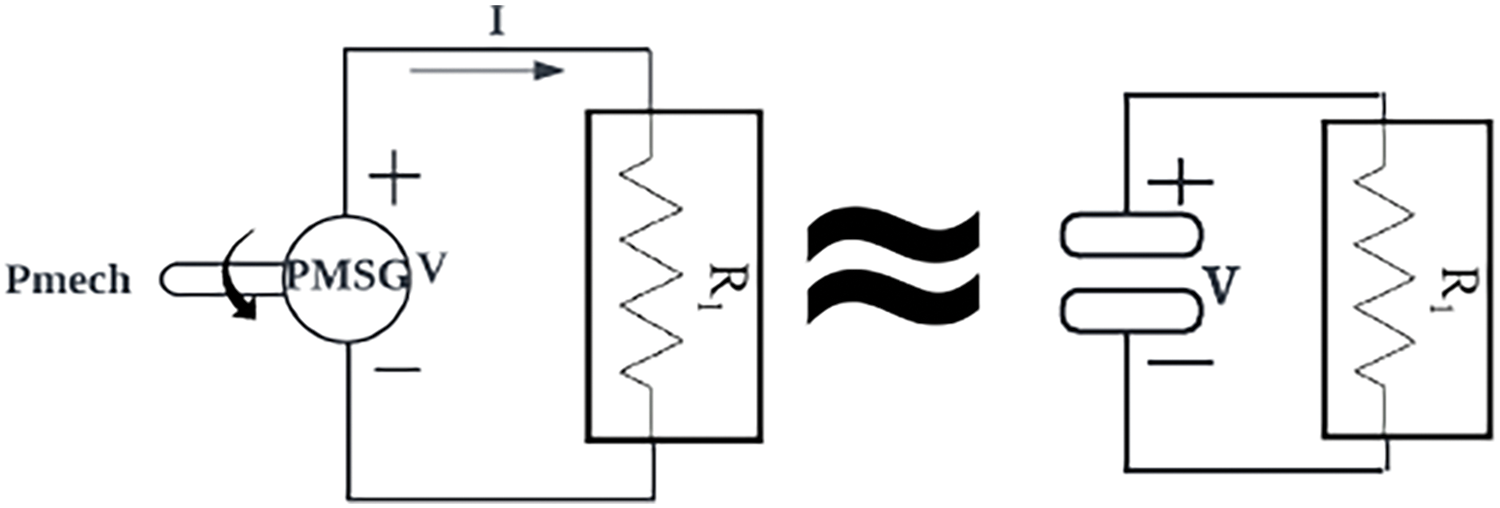
Figure 6: Analogy approach
Continued energy input from the motor propels the flywheel to higher rotational speeds until it reaches its maximum kinetic energy state. Similarly, sustained charging of the capacitor results in the accumulation of charge until the capacitor reaches its maximum capacity. Upon cessation of the motor’s operation, the rotational motion of the flywheel gradually diminishes due to dissipative forces such as friction and air resistance, releasing the stored rotational kinetic energy. In a parallel manner, disconnecting the power source from the capacitor initiates a discharge process, leading to the dissipation of the stored electric energy.
In this case, the capacitor stored energy known as electrostatic potential energy, which is defined as:
3.2 Experimental Setups to Harvest Electrical Energy
In most energy harvesting techniques, the harvester is unable to directly supply continuous power to the load due to the low instantaneous power output compared to the power required by electrical appliances. This limitation arises because the harvester collects energy from external sources. Consequently, a power management circuit is necessary to store and discharge energy at appropriate intervals, ensuring the load operates reliably.
Fig. 7 presents the proposed block diagram for the energy harvesting system. Electrical energy from the utility is supplied to the load (motor) and the heavy mass body. The rotational kinetic energy generated by the heavy mass body (either a disk or cylinder) is then utilized. This rotational kinetic energy is converted into mechanical power, which is subsequently converted back into electrical energy by a generator. The electrical energy generated is directed to the secondary system for storage. The stored energy in the battery can be used to power the load when needed. Fig. 8 shows the final outlook of the prototype.
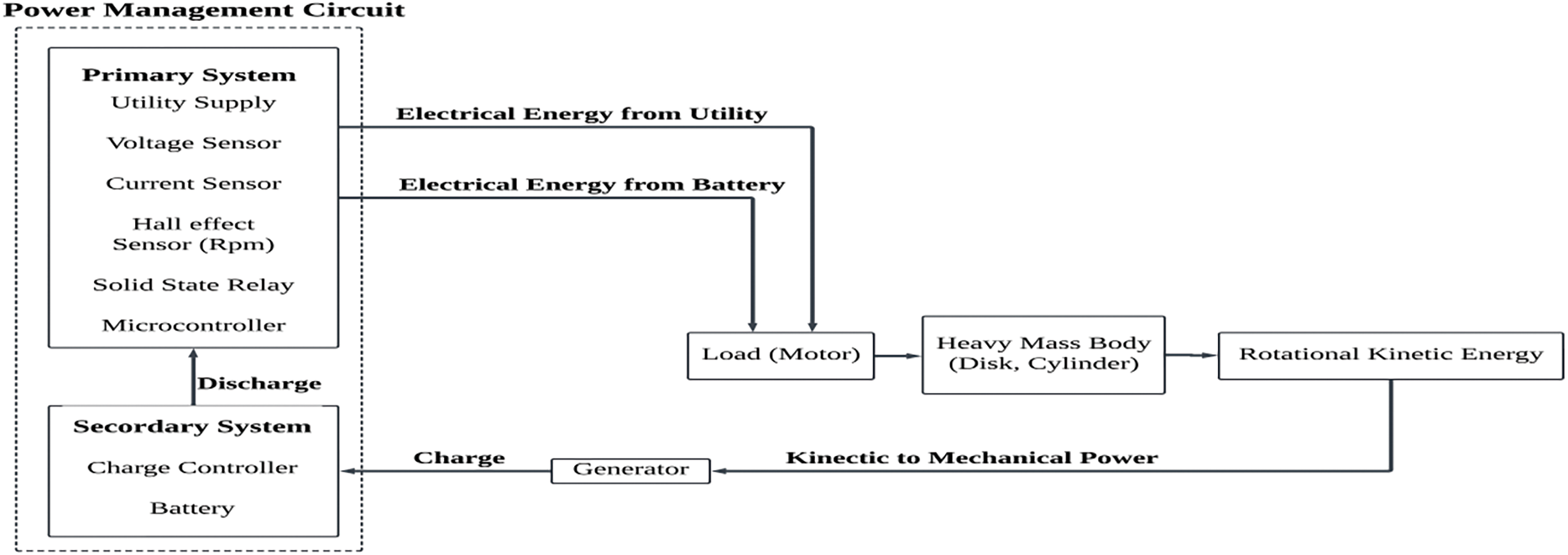
Figure 7: Block diagram for energy harvesting system
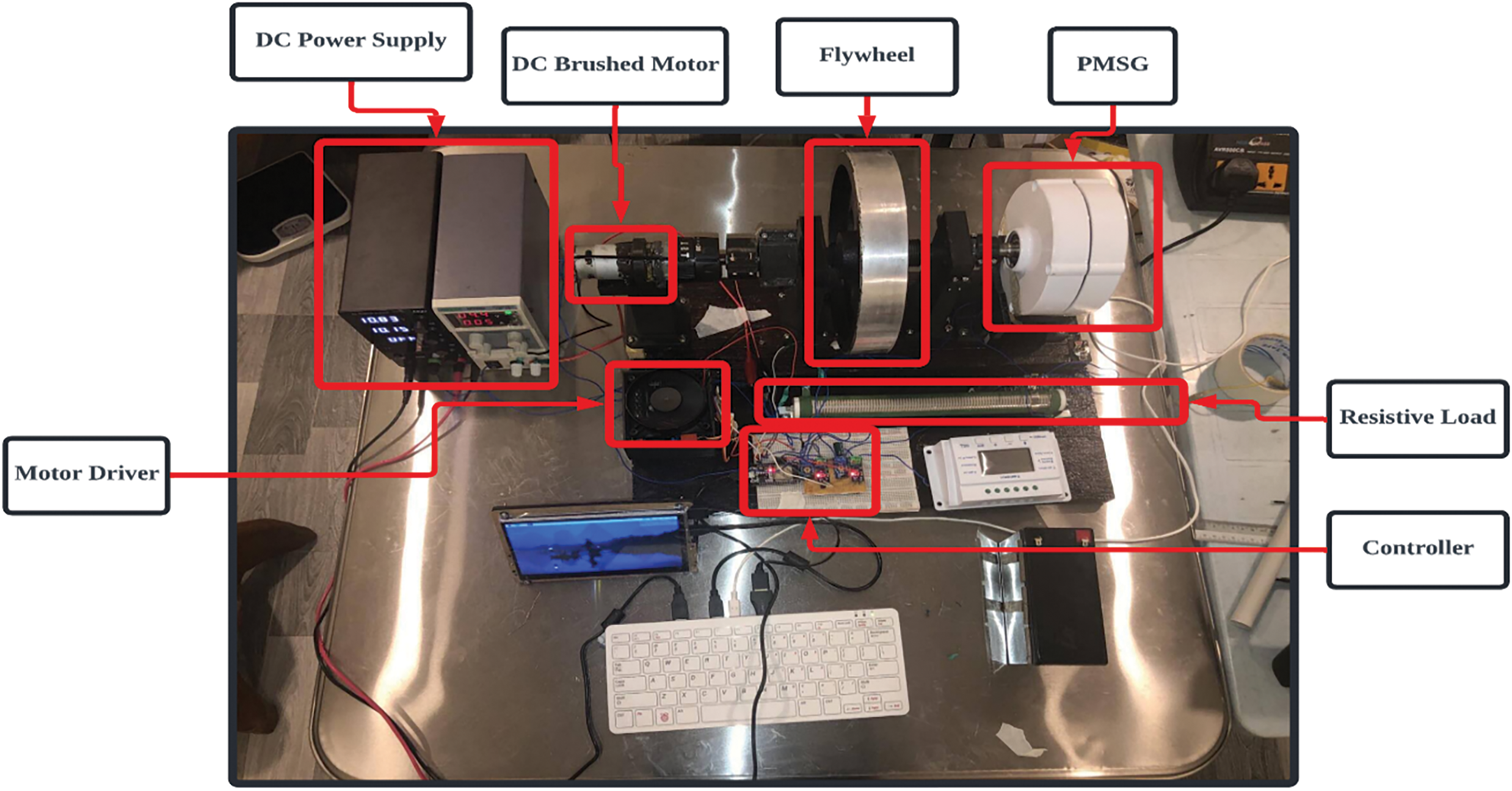
Figure 8: Final outlook for prototype
This section presents the results obtained from each step used to evaluate the amount of available rotational kinetic energy that can be harvested from the rotational mass bodies (disk and cylinder).
4.1 Physics Analysis of Disk Body
The disk body is made of cast iron and has a mass of 5 kg with a uniform diameter of 24 cm. To enable its rotation in free space, a 3D-printed shaft fabricated from PLA material with 100% infill is used. Table 3 summarizes the calculated results using Eqs. (10), (20) and (24). The power loss due to mechanical parts was measured at 20 W using Eq. (5) with the known weight. The results show that the disk body stores 23.33 J of energy when rotating at 375 rpm. In an electrical coordinate system, it behaves like a capacitor with a capacitance of 0.081 F when the capacitor voltage is 24 V. The time constant for three different scenarios free running, a 50 W load, and a 20 W charge controller decreases as the harvested power increases. These results suggest that higher power generated on the Permanent Magnet Synchronous Generator (PMSG) leads to a greater braking torque effect on the disk body during energy generation. Table 4 gives the comparison of energy loss and harvested energy from various conditions.


From Table 5, it is observed that under free-running conditions, the available rotational kinetic energy is fully dissipated (100%) into mechanical parts, such as bearing friction and the Permanent Magnet Synchronous Generator (PMSG) starting torque. In contrast, under a 40 W resistive load and a 20 W charge controller, it is estimated that a portion of the rotational kinetic energy can be recycled for useful work.

Fig. 9 displays the speed-time curves of the disk body under three different conditions. It is observed that under free-running conditions, the disk maintains its speed the longest due to the minimal braking torque effect. In contrast, a 40 W resistive load significantly reduces the disk speed, with a decrease occurring in less than 5 s. For a 20 W charge controller, the speed drops to zero within 5 to 10 s. These results indicate that recycling energy can be improved by increasing the generated power to the load. As the load power increases, the power loss due to mechanical parts decreases, leading to a shorter mechanical time constant.
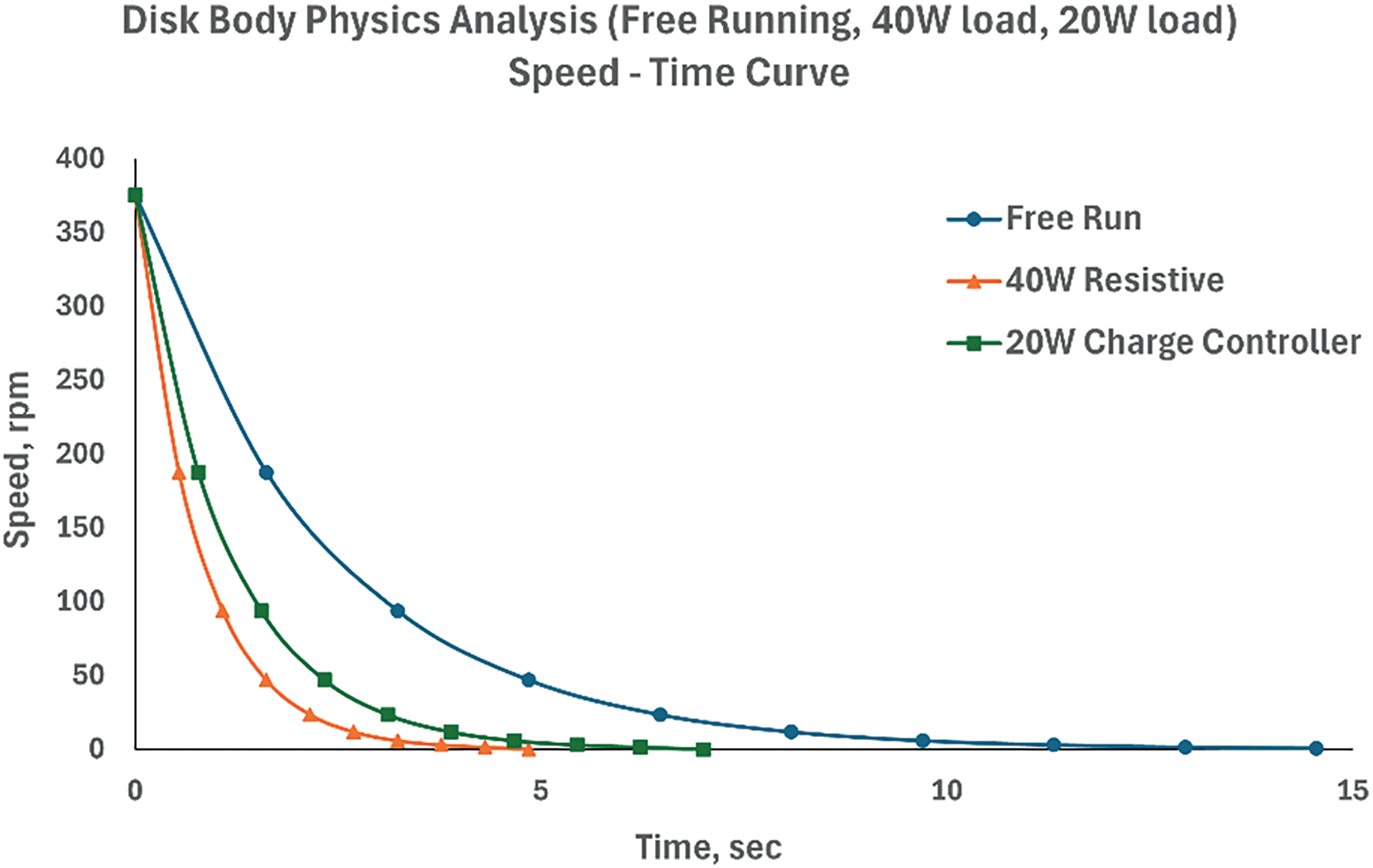
Figure 9: Comparison of speed-time curve from disk body under three different conditions
4.2 Physics Analysis of Cylinder Body
The cylinder body, with a mass of 15 kg and made of concrete, is enclosed in a PVC tube with a diameter of 15.24 cm and a length of 36 cm. Four wheels are used to distribute the force evenly across each spinner to prevent damage to the mechanical parts, with the wheels spaced 20 cm apart. Table 6 summarizes the calculated results using the same methods as the previous analysis. The mechanical loss was measured at 37 W, and the results indicate that the cylinder body stores 33.63 J of energy when rotating at 375 rpm. In an electrical coordinate system, it behaves like a capacitor with a capacitance of 0.117 F when the capacitor voltage is 24 V, according to the PMSG rated voltage. Similar to the previous case, the mechanical time constant for three scenarios—free running, a 40 W load, and a 20 W charge controller—decreases as the harvested power increases.

Table 7 gives the comparison of energy loss in mechanical parts and harvested energy from various conditions.

From Tables 7 and 8, it is observed that the outcomes are consistent with the previous case: no energy was harvested during free running. Under a 40 W resistive load, there was a 48.05% energy loss due to mechanical friction, with only 51.95% of the energy (17.47 J) delivered to the load. Under a 20 W charge controller, there was a 64.91% energy loss due to mechanical parts, and only 35.09% (11.80 J) of the energy was consumed by the charge controller. These results indicate that higher efficiency can be achieved if the power generation exceeds the power loss in the cylinder body.

Fig. 10 summarised all the speed-time curve under various conditions. It shows the rate of change in speed reducing exponentially when the power generation increases.
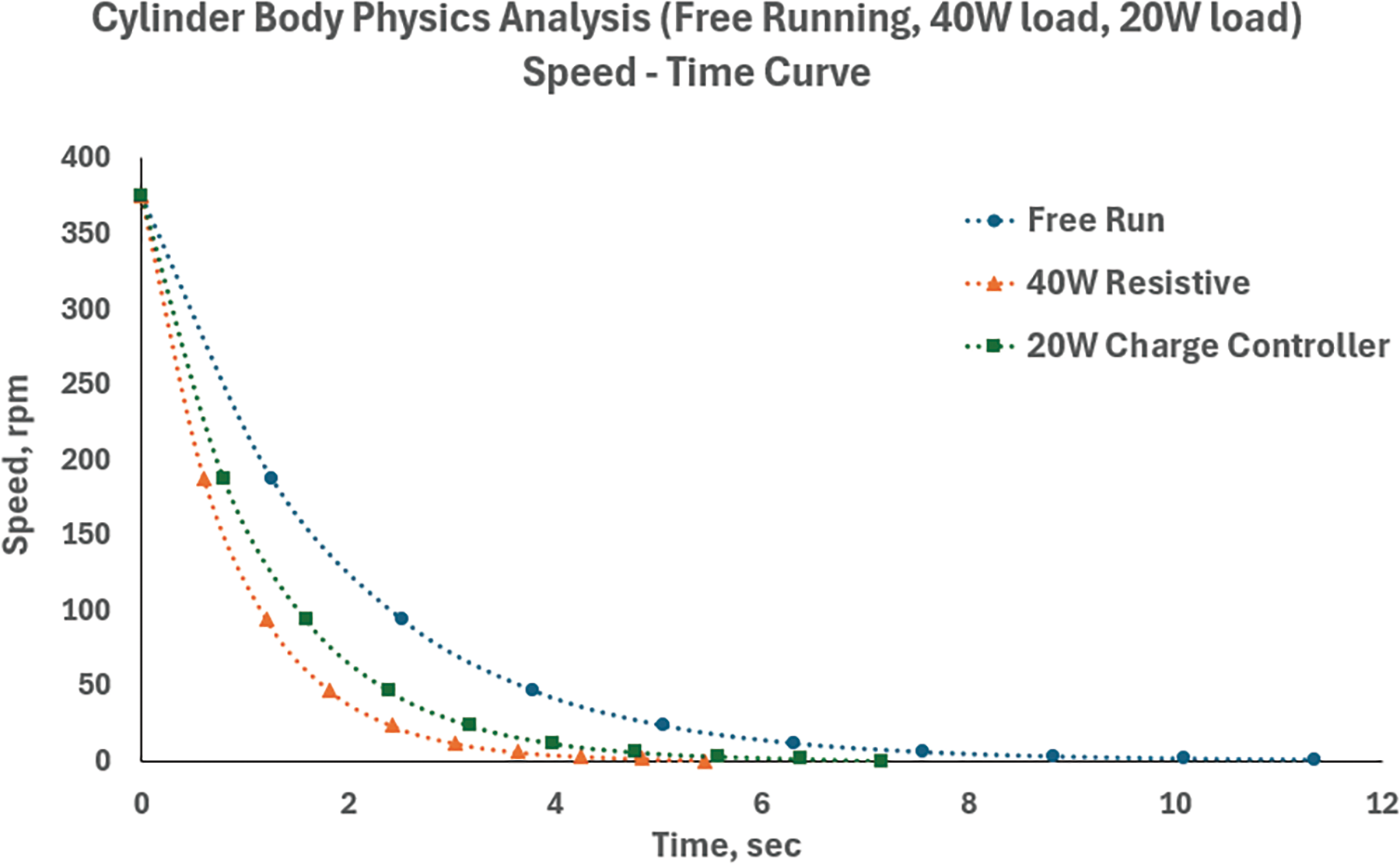
Figure 10: Comparison of speed-time curve from cylinder body under three different conditions
4.3 Comparison between Physics Analysis of Disk and Cylinder Body
From Table 9, it was observed that the available kinetic energy stored in the disk body is 36.17% less than that of the cylinder body due to differences in dimensions and weight. However, the overall time constant for the disk body is significantly higher than that for the cylinder body, indicating that the disk body experiences less friction loss and therefore requires a longer time to come to a stop. Under the 20 W charge controller condition, the differences between the disk and cylinder were minimal, with only a 12.17% variance, as shown in Fig. 11, where their curve lines overlap.
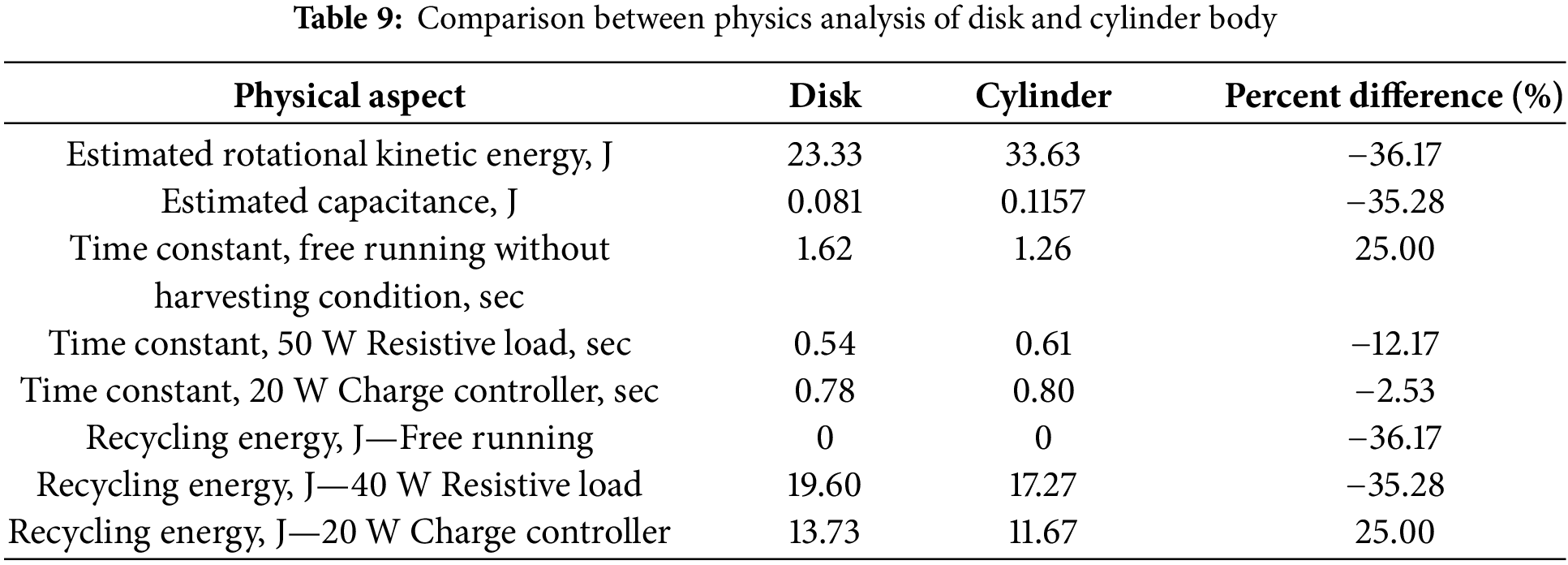

Figure 11: Comparison of speed-time curve from disk and cylinder body
Fig. 11 summarised all the speed-time curves and shows the variation between disk and cylinder body.
5 Energy Harvesting for Environmental Sustainability
Through the conversion of lost or otherwise unutilized energy into useable electricity, energy harvesting technologies provide a crucial chance to improve environmental sustainability. To lessen the load on traditional power plants, this method collects kinetic energy that would have gone to waste, such as the rotating kinetic energy of industrial gears, and puts it to another use. Energy harvesting devices allow enterprises to drastically reduce their impact on the environment and make a positive difference in running more sustainable operations [43]. These devices have a dual purpose: lowering emissions of greenhouse gases and saving money on energy bills [44,45]. Potential energy recovery, prices, and sustainability advantages of energy harvesting systems are highlighted in the following Table 10, which highlights diverse industrial uses of these technology. Where assesses the efficiency of different energy harvesting systems in relation to diverse industrial equipment. An industrial turbine equipped with a flywheel system can generate 150,000 kWh/year. The installation cost for this system is $100,000. The yearly savings from using this system amount to $15,000, and it also reduces CO2 emissions by 45 tons/year. The cost efficiency of this system is 15%. An electric motor equipped with a regenerative braking system has the capability to collect 80,000 kilowatt-hours per year. The initial cost of this motor is $60,000, but it results in yearly savings of $10,000. Additionally, it reduces carbon dioxide emissions by 30 tons per year and achieves a cost efficiency of 16.7%. Additional equipment such as spinning shafts, conveyor systems, and fan systems also provide favourable energy conservation and emission reduction outcomes, but with differing expenses and efficiencies [46,47].

In order to optimise efficiency and reduce environmental effect, future proposals for energy harvesting in environmental sustainability centre on merging cutting-edge technology with renewable energy sources [48]. The performance and endurance of energy harvesting devices may be improved by placing an emphasis on the development of novel materials and well-designed structures. Furthermore, developing multidisciplinary research and cooperation will be essential to developing scalable solutions that support the objectives of global sustainability. Table 11 is summarizing future recommendations for energy harvesting to enhance environmental sustainability.
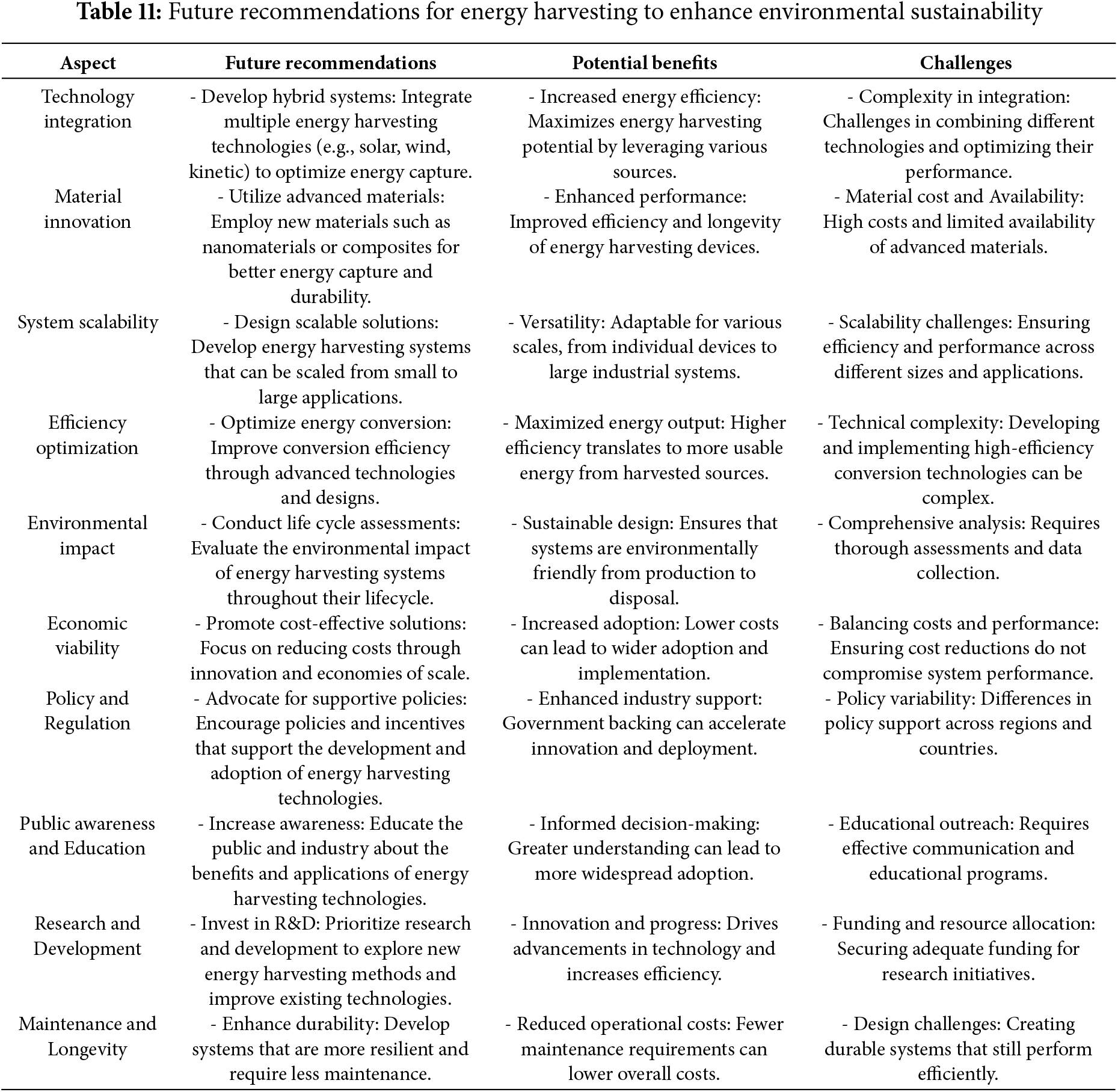
The theoretical and experimental results for both the disk and cylinder bodies under free-running conditions indicated zero recyclable energy, confirming the accuracy of the theoretical models in no-load scenarios. However, discrepancies were observed under loaded conditions, suggesting that the theoretical models do not fully account for practical inefficiencies such as heat dissipation and resistance variations.
For the disk body, the theoretical recycling energy under a 40 W resistive load condition was 15.55 J, while under a 20 W charge controller condition, it was 13.73 J. Similarly, for the cylinder body, the theoretical recycling energy was 17.27 J under a 40 W resistive load and 11.67 J under a 20 W charge controller. These findings highlight that practical inefficiencies such as control system inefficiencies, electronic losses, and mechanical friction are not completely captured by the theoretical models. This study underscores the need to consider these practical inefficiencies when designing energy recycling systems for industrial applications. Additionally, the comparison between the disk and cylinder bodies reveals that the disk body generally exhibits higher efficiency in energy recovery under similar conditions, making it a more favorable candidate for energy recycling in rotational systems.
The insights from this research could significantly impact the design of more efficient energy recycling systems, leading to enhanced sustainability in industrial practices. Future research should focus on several key areas to further improve the understanding and efficiency of energy recycling systems in industrial applications. Long-term experimental studies are needed to investigate mechanical power transmission via magnetic coupling, which could provide more insights into potential energy savings and efficiency improvements. Establishing precise and safe procedures to address faults such as overspeed, short circuits, and overvoltage protection will be crucial for ensuring the reliability and safety of these systems.
Acknowledgment: Authors would like to thank Multimedia University, Malaysia, for their financial, lab and their logistic support throughout the journey.
Funding Statement: The APC was funded by Research Management Center, Multimedia University, Malaysia.
Author Contributions: Conceptualization, See Wei Jing, Md Tanjil Sarker and Gobbi Ramasamy; Methodology, See Wei Jing, Md Tanjil Sarker and Gobbi Ramasamy; Validation, See Wei Jing and Md Tanjil Sarker; Formal analysis, See Wei Jing and Md Tanjil Sarker; Investigation, See Wei Jing, Md Tanjil Sarker, Gobbi Ramasamy, Siva Priya Thiagarajah and Fazlul Aman; Data curation, See Wei Jing, Md Tanjil Sarker and Gobbi Ramasamy; Writing—original draft, See Wei Jing and Md Tanjil Sarker; Writing—review & editing, See Wei Jing, Md Tanjil Sarker, Gobbi Ramasamy, Siva Priya Thiagarajah and Fazlul Aman; Visualization, See Wei Jing, Md Tanjil Sarker and Gobbi Ramasamy; Supervision, Md Tanjil Sarker, Gobbi Ramasamy and Siva Priya Thiagarajah; Funding acquisition, Gobbi Ramasamy. All authors reviewed the results and approved the final version of the manuscript.
Availability of Data and Materials: The data that support the findings of this study are available from the corresponding author, (G. R.), upon reasonable request.
Ethics Approval: Not applicable.
Conflicts of Interest: The authors declare no conflicts of interest to report regarding the present study.
References
1. Zishan S, Molla AH, Rashid H, Wong KH, Fazlizan A, Lipu MSH, et al. Comprehensive analysis of kinetic energy recovery systems for efficient energy harnessing from unnaturally generated wind sources. Sustainability. 2023;15(21):15345. doi:10.3390/su152115345. [Google Scholar] [CrossRef]
2. Saidur R, Hasanuzzaman M, Rahim NA. Energy consumption, energy savings and emission analysis for industrial motors. In: Proceedings of the 2010 International Conference on Industrial Engineering and Operations Management; 2020; Dhaka. Bangladesh. [Google Scholar]
3. Hasanuzzaman M, Rahim NA, Hosenuzzaman M, Saidur R, Mahbubul IM, Rashid MM. Energy savings in the combustion-based process heating in industrial sector. Renew Sustain Energ Rev. 2012;16(7):4527–36. doi:10.1016/j.rser.2012.05.027. [Google Scholar] [CrossRef]
4. Li X, Anvari B, Palazzolo A, Wang Z, Toliyat H. A utility-scale flywheel energy storage system with a shaftless, hubless, high-strength steel rotor. IEEE Trans Ind Electron. 2018;65(8):6667–75. doi:10.1109/TIE.2017.2772205. [Google Scholar] [CrossRef]
5. Sarker MT, Haram MHSM, Shern SJ, Ramasamy G, Al Farid F. Second-life electric vehicle batteries for home photovoltaic systems: transforming energy storage and sustainability. Energies. 2024;17(10):2345. doi:10.3390/en17102345. [Google Scholar] [CrossRef]
6. Koohi-Fayegh S, Rosen MA. A review of energy storage types, applications and recent developments. J Energy Storage. 2020;27:101047. doi:10.1016/j.est.2019.101047. [Google Scholar] [CrossRef]
7. Sarker MT, Haram MHSM, Ramasamy G, Al Farid F, Mansor S. Solar photovoltaic home systems in Malaysia: a comprehensive review and analysis. Energies. 2023;16(23):7718. doi:10.3390/en16237718. [Google Scholar] [CrossRef]
8. Ahmadi L, Young SB, Fowler M, Fraser RA, Achachlouei MA. A cascaded life cycle: reuse of electric vehicle lithium-ion battery packs in energy storage systems. Int J Life Cycle Assess. 2017;22(1):111–24. doi:10.1007/s11367-015-0959-7. [Google Scholar] [CrossRef]
9. Nienborg B, Gschwander S, Munz G, Fröhlich D, Helling T, Horn R, et al. Life cycle assessment of thermal energy storage materials and components. Energy Proc. 2018;155:111–20. doi:10.1016/j.egypro.2018.11.063. [Google Scholar] [CrossRef]
10. Liu Z, Chen Y, Zhuo R, Jia H. Energy storage capacity optimization for autonomy microgrid considering CHP and EV scheduling. Appl Energy. 2018;210:1113–25. doi:10.1016/j.apenergy.2017.07.002. [Google Scholar] [CrossRef]
11. Richa K, Babbitt CW, Nenadic NG, Gaustad G. Environmental trade-offs across cascading lithium-ion battery life cycles. Int J Life Cycle Assess. 2017;22(1):66–81. doi:10.1007/s11367-015-0942-3. [Google Scholar] [CrossRef]
12. Gigović L, Pamučar D, Božanić D, Ljubojević S. Application of the GIS-DANP-MABAC multi-criteria model for selecting the location of wind farms: a case study of Vojvodina, Serbia. Renew Energy. 2017;103:501–21. doi:10.1016/j.renene.2016.11.057. [Google Scholar] [CrossRef]
13. Goupee AJ, Koo B, Lambrakos K, Kimball R. Model tests for three floating wind turbine concepts. In: Offshore Technology Conference; 2012; Houston, TX, USA. doi:10.4043/23470-MS. [Google Scholar] [CrossRef]
14. Izumi Y, Iizuka A, Ho H-J. Calculation of greenhouse gas emissions for a carbon recycling system using mineral carbon capture and utilization technology in the cement industry. J Clean Prod. 2021;312:127618. doi:10.1016/j.jclepro.2021.127618. [Google Scholar] [CrossRef]
15. Massoud M, Vega G, Subburaj A, Partheepan J. Review on recycling energy resources and sustainability. Heliyon. 2024;9(4):e15107. doi:10.1016/j.heliyon.2023.e15107. [Google Scholar] [PubMed] [CrossRef]
16. Honra J, Dela Cruz JC, Tud RC, Aclan JC, Conejar FBM, Onda GKD, et al. Design and development of an efficient power-generating revolving door. In: 2020 11th IEEE Control and System Graduate Research Colloquium (ICSGRC); 2020; Shah Alam, Malaysia. p. 167–72. doi:10.1109/ICSGRC49013.2020.9232484. [Google Scholar] [CrossRef]
17. Shrestha K, Maharjan P, Bhatta T, Sharma S, Lee SH, Park JY. A rotational wind energy harvester and self-powered portable weather station. In: 2021 IEEE 20th International Conference on Micro and Nanotechnology for Power Generation and Energy Conversion Applications (PowerMEMS); 2021; Exeter, UK. p. 168–71. doi:10.1109/PowerMEMS54003.2021.9658382. [Google Scholar] [CrossRef]
18. Carandell M, Toma DM, Carbonell M, del Rio J, Gasulla M. Design and testing of a kinetic energy harvester embedded into an oceanic drifter. IEEE Sens J. 2020;20(23):13930–9. doi:10.1109/JSEN.2020.2976517. [Google Scholar] [CrossRef]
19. Hossam-E-Haider M, Rokonuzzaman M. Design of a efficient energy generating system using speed breaker for Bangladesh. In: 2015 5th National Symposium on Information Technology: Towards New Smart World (NSITNSW); 2015; Riyadh, Saudi Arabia. p. 1–5. doi:10.1109/NSITNSW.2015.7176393. [Google Scholar] [CrossRef]
20. Sarker MT, Alam MJ, Ramasamy G, Uddin MN. Energy demand forecasting of remote areas using linear regression and inverse matrix analysis. Int J Electr Comput Eng. 2024;14(1):129. doi:10.11591/ijece.v14i1.pp129-139. [Google Scholar] [CrossRef]
21. Jawahar CP, Michael PA. A review on turbines for micro hydro power plant. Renew Sustain Energy Rev. 2017;72:882–7. doi:10.1016/j.rser.2017.01.133. [Google Scholar] [CrossRef]
22. Sarker MT, Ramasamy G, Al Farid F, Mansor S, Abdul Karim H. Energy consumption forecasting: a case study on Bhashan Char island in Bangladesh. Bull Electr Eng Inform. 2024;13(5):3021–32. doi:10.11591/eei.v13i5.7561. [Google Scholar] [CrossRef]
23. Bai J, Cheng Y, Yao S, Wu F, Chen C. Three-level optimal scheduling and power allocation strategy for power system containing wind-storage combined unit. Energy Eng. 2024;121(11):3381–400. doi:10.32604/ee.2024.053683. [Google Scholar] [CrossRef]
24. Kumara, Suparyawan DPD, Ariastina WG, Sukerayasa W, Giriantari IAD. Microhydro powerplant for rural area in Bali to generate green and sustainable electricity. In: 2014 International Conference on Smart Green Technology in Electrical and Information Systems (ICSGTEIS); 2014; Kuta, Bali, Indonesia. p. 113–7. doi:10.1109/ICSGTEIS.2014.7038741. [Google Scholar] [CrossRef]
25. Goh KH, Duan F. Performance of a prototype micro wind turbine in the manmade wind field from air conditioner of buildings: research article. QScience Connect. 2013. doi:10.5339/connect.2013.4. [Google Scholar] [CrossRef]
26. Venkatesh G. Power production technique using exhaust gas from present automobiles via convergent-divergent nozzle. In: 2006 IEEE Conference on Electric and Hybrid Vehicles. Pune, India; 2006; p. 1–9. doi:10.1109/ICEHV.2006.352295. [Google Scholar] [CrossRef]
27. Wong KH, Chong WT, Yap HT, Fazlizan A, Omar WZW, Poh. The design and flow simulation of a power-augmented shroud for urban wind turbine system. Energy Proc. 2014;61:1275–8. doi:10.1016/j.egypro.2014.11.1080. [Google Scholar] [CrossRef]
28. Chikere AO, Al-Kayiem HH, Abdul Kari ZA. Review on the enhancement techniques and introduction of an alternate enhancement technique of solar chimney power plant. J Appl Sci. 2011;11(11):1877–84. doi:10.3923/jas.2011.1877.1884. [Google Scholar] [CrossRef]
29. Yeboah D, Ackor N, Abrowah E. Evaluation of wind energy recovery from an underground mine exhaust ventilation system. J Ind Eng. 2023;2023:1–20. doi:10.1155/2023/8822475. [Google Scholar] [CrossRef]
30. Puttichaem W, Putivisutisak S, Boonyongmaneerat Y, Vadhanasindhud P. Early development of a shaftless horizontal axis wind turbine for generating electricity from air discharged from ventilation systems. Int J Energy Res. 2020;46:212–22. doi:10.1002/er.6221. [Google Scholar] [CrossRef]
31. Suheel SZ, Fazlizan A. Workability of a new kinetic energy recovery system proven mathematically. AIP Conf Proc Green Design Manuf. 2021;2339(1):020258. doi:10.1063/5.0044537. [Google Scholar] [CrossRef]
32. Puttichaem W, Boonyongmaneerat Y, Vadhanasindhu P, Putivisutisak S. Performance of the prototype shaftless small scale horizontal wind turbine for electricity generating from industrial exhaust air system. IOP Conf Ser: Earth Environ Sci. 2020;463(1):012140. doi:10.1088/1755-1315/463/1/012140. [Google Scholar] [CrossRef]
33. Al-Kayiem HH, Git HM, Lee SL. Experimental investigation on solar-flue gas chimney. J Power Energy Eng. 2009;3:25–31. [Google Scholar]
34. Sathiya Moorthy K, Sundar Singh Sivam SP, Shivashankar P, Adithya S. Wind energy recovery from a cooling tower with the help of a wind turbine generator. Indian J Sci Technol. 2016;9(37):1–6. doi:10.17485/ijst/2016/v9i37/94792. [Google Scholar] [CrossRef]
35. Chilugodu N, Yoon Y-J, Chua KS, Datta D, Baek JD, Park T, et al. Simulation of train induced forced wind draft for generating electrical power from Vertical Axis Wind Turbine (VAWT). Int J Precis Eng Manuf. 2012;13(7):1177–81. doi:10.1007/s12541-012-0156-6. [Google Scholar] [CrossRef]
36. Hasan MA, Hossain MT, Paul R, Akter N. Producing electrical energy by using wastage wind energy from exhaust fans of industries. Int J Sci Eng Res. 2013;4:1184–7. [Google Scholar]
37. Mann HS, Singh PK. Effect of number of blades in ducted turbine system on kinetic energy extraction from chimney flue gases-benchmarking with wind energy system. J Mech Sci Technol. 2018;32:5443–55. doi:10.1007/s12206-018-1042-7. [Google Scholar] [CrossRef]
38. Zamakhshari NHB, Uddin SM, Bakar MIA. Development of wind mini generator by using air conditioner air waste. J Eng Technol. 2022;10(1):62–9. [Google Scholar]
39. Pei Y, Liu Q, Ooi KT. Research on energy-efficient disc pumps: a review on physical models and energy efficiency. Machines. 2023;11(10):954. doi:10.3390/machines11100954. [Google Scholar] [CrossRef]
40. Lu K. Materials in energy conversion, harvesting, and storage. San Diego, CA, USA: John Wiley & Sons; 2014. doi:10.1002/9781118892374. [Google Scholar] [CrossRef]
41. Lippert D, Spektor J. Rolling resistance and industrial wheels. Hamilton White Paper. 2013 [cited 2024 Oct 18]. Available from: https://og.mhi.org/media/members/14220/130101690137732025.pdf. [Google Scholar]
42. Khoshkalam A, Moosavi SMM. Study on performance of MPPT methods in WRSG-based wind turbines utilized in islanded micro grid. Lecture notes in electrical engineering. Singapore: Springer Singapore; 2018. p. 591–603. doi:10.1007/978-981-10-8672-4_44. [Google Scholar] [CrossRef]
43. Ghane D, Wakchaure V. Parametric analysis and design considerations for micro wind turbines: a comprehensive review. Energy Eng. 2024;121(11):3199–220. doi:10.32604/ee.2024.050952. [Google Scholar] [CrossRef]
44. Sarker MT, Haram MHSM, Shern SJ, Ramasamy G, Al Farid F. Readiness of Malaysian PV system to utilize energy storage system with second-life electric vehicle batteries. Energies. 2024;17(16):3953. doi:10.3390/en17163953. [Google Scholar] [CrossRef]
45. Su H, Song S, Wang X. Probabilistic calculation of tidal currents for wind powered systems using PSO improved LHS. Energy Eng. 2024;121(11):3289–303. doi:10.32604/ee.2024.054643. [Google Scholar] [CrossRef]
46. Lackner M. Energy efficiency: comparison of different systems and technologies. In: Handbook of climate change mitigation and adaptation. Cham: Springer International Publishing; 2022. p. 381–456. doi:10.1007/978-3-030-72579-2_24. [Google Scholar] [CrossRef]
47. Beguedou E, Narra S, Armoo EA, Agboka K, Damgou MK. Alternative fuels substitution in cement industries for improved energy efficiency and sustainability. Energies. 2023;16(8):3533. doi:10.3390/en16083533. [Google Scholar] [CrossRef]
48. Liu Q, Zhang R. Green energy development system under the background of environmental sustainability. Energy Eng. 2020;118(1):173–87. doi:10.32604/EE.2020.012788. [Google Scholar] [CrossRef]
Cite This Article
 Copyright © 2025 The Author(s). Published by Tech Science Press.
Copyright © 2025 The Author(s). Published by Tech Science Press.This work is licensed under a Creative Commons Attribution 4.0 International License , which permits unrestricted use, distribution, and reproduction in any medium, provided the original work is properly cited.


 Submit a Paper
Submit a Paper Propose a Special lssue
Propose a Special lssue View Full Text
View Full Text Download PDF
Download PDF

 Downloads
Downloads
 Citation Tools
Citation Tools